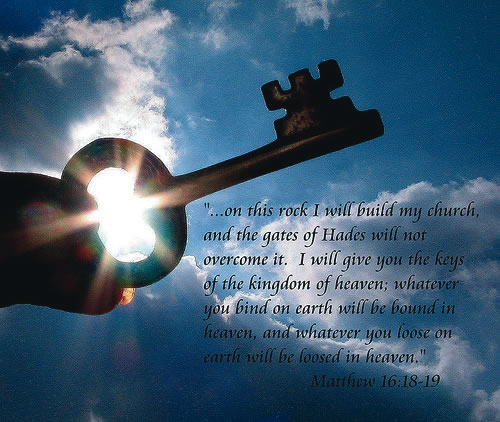Bible Critics Can Overstate Idea Of ‘Enlightened Pagan’
by
Damien F. Mackey
“Salvation is of the Jews” (John 4:22)
“I will arouse your sons, O Zion, against your sons, O Greece” (Zechariah 9:13)
PART ONE
Here it will be argued that - contrary to what is often believed about the following biblical characters - none of these can really accurately be designated as an‘enlightened pagan’:
1. MELCHIZEDEK
2. RAHAB (in genealogy of David and Jesus)
3. RUTH
4. ACHIOR (in my Catholic Bible, Book of Judith)
5. JOB
6. (Probably also) the Magi.
Let us consider why.
1. MELCHIZEDEK was not an enlightened Canaanite priest-king. Melchizedek was the great Shem, son of Noah. This is apparently a Jewish tradition and I have long accepted it. Now, this is all explained very well in a recent article that I have posted at: http://amaic-abraham.blogspot.com.au/2012/09/melchizedek-was-shem-son-of-noah.html
Regarding 2, 3 and 4, for Rahab (as specified above), Ruth and Achior to have been former Gentile pagans, Canaanite in the first case (2.) and Moabites in the other two instances (3. and 4.), then this would have meant a serious flouting of Mosaic law and prohibitions: Deuteronomy 7 in the case of Rahab (see article posted at: http://amaic-kingdavid.blogspot.com.au/2012/09/the-genealogical-rachab-was-not.html), and Deuteronomy 23:3 for the presumed Moabites (see article posted at: http://amaic-kingdavid.blogspot.com.au/2012/09/ruth-was-israelite.html).
2. RAHAB. The Canaanite harlot, Rahab, whose ‘faith’both Paul (Hebrews 11:31) and James (2:25) praised incidentally (like Jesus with the Roman centurion, Luke 7:1-10), was not she who became the ancestress of David and Jesus, despite what is universally taught. The true situation, as well explained in the above-mentioned “Rachab” article, is that Rahab the harlot is to be distinguished from the Israelite woman, Rachab (note different spelling), whose name is to be found in the Davidic genealogical list.
3. RUTH. I have long believed, too, that Ruth of the Judges era could not plausibly have been a Moabitess for reasons already explained (Deuteronomy 23:3), but considered especially in my extensive research on the identity of Achior, presumably a Moabite, in the Book of Judith (see 4. next). I discussed Achior at length in Volume Two of my university thesis, A Revised History of the Era of King Hezekiah of Judah and its Background (accessible at: http://hdl.handle.net/2123/5973). Whilst Ruth, a woman, apparently gets away with it, Achior, a male, does not (see 4. next). Then necessity of Ruth’s being an Israelite is well argued in the above-mentioned “Ruth” article.
4. ACHIOR. I argued at length in the above-mentioned university thesis that Achior was not a Moabite at all but a Naphtalian Israelite. He was Ahikar (var. Achior, Vulgate), the nephew of Tobit (Book of Tobit 1:22). The mistaken notion that Achior was a Moabite leader is perhaps the primary reason why the Jews have not accepted the Book of Judith as part of the scriptural canon. I live in the hope that this can one day be rectified.
5. JOB I have firmly identified as Tobit’s very son, Tobias. See our site, “Holy Job Was An Israelite”, http://bookofjob-amaic.blogspot.com.au/ Thus the righteous Job was, not an enlightened Edomite (and not an Arabian sheikh), but a sage of Israel.
6. THE MAGI. There is some tradition that has them descending from the family of Job. I would suspect that the “east” in which the Magi dwelt was, not Persia by any means, but the same approximate “east”wherein Job dwelt, in the land of Uz, in Transjordanian Bashan. See our Jobian articles at site, “Holy Job Was An Israelite”.
PART TWO
Our {AMAIC} appreciation of the cultural, sapiential and spiritual supremacy of the holy people of Israel (the sincere Yahwists) has led to further important Israelitic identifications of certain famous historical characters (even dynasties), such as:
- the gifted Senenmut (Senmut) of 18th dynasty Egyptian history, consort of Hatshepsut, with King Solomon. See our site: http://amaic-kingdavid.blogspot.com.au/ Hatshepsut herself rightly being identified by Dr. Immanuel Velikovsky (Ages in Chaos, I) with the biblical Queen [of] Sheba. See our site: http://hatshepsut-amaic.blogspot.com.au/
- King Hammurabi the Lawgiver as King Solomon again, this time in his guise as ruler of Babylon. See our site: http://amaic-kingdavid.blogspot.com.au/
And, selectively following Dr. E. Metzler, “Conflict of Laws in the Israelite Dynasty of Egypt” (http://moziani.tripod.com/dynasty/ammm_2_1.htm), I have accepted his identification of Egypt’s 18th dynasty as Israelite, with the mighty Thutmoside pharaohs as Davidide.
The El Amarna dynasty was, I believe, a Baalistic Israelite resurgence under King Ahab (Akhnaton) and his wicked Phoenician wife, Queen Nefertiti (Jezebel). See e.g. our: http://queennefertiti-amaic.blogspot.com.au/
General Jehu is the ambiguous Horemheb, making the 19th dynasty that he (Horemheb) initiated, as Syro-(Israelite?).
And I further suspect that Egypt’s 20th dynasty was Judaean again, with pharaoh Ramses III as the mighty King Amaziah of Judah. See our: http://ramsesiii-amaic.blogspot.com.au/
To conclude
Whilst there are indeed to be found in the Scriptures some highly ‘enlightened pagans’or Gentiles of ‘faith’, such as Rahab the harlot and the Roman centurion, the Old Testament ones at least would not have been allowed into the Yahwistic fold according to the very strict Laws of Moses.

